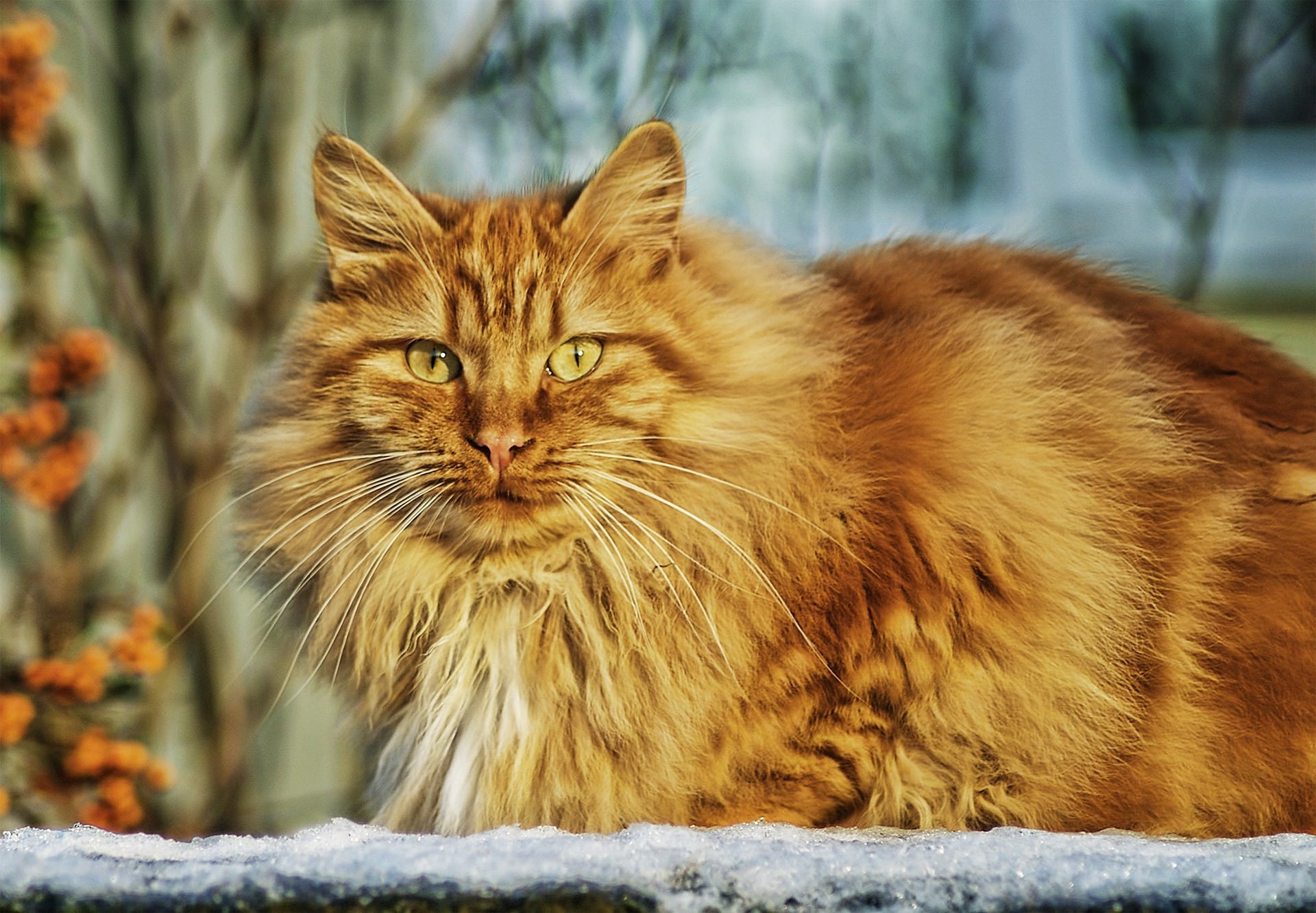
Diabetes is a serious disease and, contrary to what many people think, it does not only occur in humans. In fact, your cat (or dog) can also suffer from diabetes. Characterized by insulin resistance and high blood sugar levels, diabetes is one of the most common conditions observable in older, overweight or obese cats. As a matter of fact, diabetes is almost three times more common in cats than in dogs. For this reason, it is essential to know how to recognize its main symptoms in order to prescribe a treatment that will allow your cats to live their lives normally. But what is feline diabetes in practice? How common is it in the feline population? What are the main symptoms of feline diabetes? How can a cat with diabetes be treated? Pep2dia tells you everything you need to know.
What is feline diabetes?
Feline diabetes is very similar to diabetes in humans: it is the body’s inability to regulate its blood sugar levels.
As in humans, glucose is the main fuel for many cells. Without it, the body has difficulty functioning. Normally, in a healthy cat, blood sugar levels are regulated by insulin, a hormone secreted by the pancreas. This hormone is responsible for ensuring that blood glucose is absorbed by the cells. In other words, this hormone regulates the level of glucose in the blood. Feline diabetes occurs when the cat’s pancreas and insulin no longer perform their functions.
This leads to hyperglycemia, which is when the level of glucose in the blood is abnormally high. The consequences of hyperglycemia for the feline’s body are numerous and put its health at risk. When insulin no longer fulfils its role, the cat’s body starts to break down fat and protein cells to use them for energy, while unused glucose accumulates in the cat’s bloodstream.
Unlike dogs, who most often suffer from type I diabetes, cats suffer more from type II diabetes. This is a situation of insulin resistance: the cat’s cells develop a resistance to insulin. The pancreas, in order to respond to this situation, will secrete more insulin, which ultimately results in the pancreas becoming fatigued. The pancreas is then unable to fulfil its mission.
It is now estimated that about 2% of cats in Europe suffer from feline diabetes. However, this figure is probably underestimated due to the fact that few owners recognize the symptoms of this condition.
The main signs and symptoms of feline diabetes
Feline diabetes has several signs and symptoms that are important to recognize. These are similar to the symptoms suffered by other mammals, such as humans and dogs.
More frequent urination with increased thirst
Like in many other mammals, one of the most common symptoms of feline diabetes is urination disorder. A cat with diabetes will urinate more frequently and more heavily. This is called polyuria.
This is due to the high concentration of glucose in the blood. As the pancreas and insulin are unable to regulate blood sugar, the kidneys attempt to remove excess glucose from the body through the urine.
Polyuria can lead to high body water loss and result in dehydration of the animal.
This situation also involves polydipsia in the cat; or in other words, excessive thirst. For the cat, it is a matter of rehydrating itself in order to eliminate the excess glucose in its blood more quickly.
Eating disorders, weight loss and weight gain
When a cat is diabetic, it may experience an eating disorder and unexplained weight loss or gain.
This is because when a cat has feline diabetes, its cells can no longer absorb glucose from the bloodstream properly. This causes the cat’s cells to draw energy from available fats and proteins in the body to make up for the lack of glucose. This can lead to weight loss (the cat’s muscle tissue and fat mass are lost), but also to an increase in the cat’s appetite: this is known as polyphagia. In fact, the cat is trying to make up for its lack of energy by eating more.
When a cat has had diabetes for a long time, it can suffer from poor appetite, vomiting and even lethargy. Indeed, over the long term, hyperglycemia and hypoglycemia can cause nausea in cats, leading to vomiting, loss of appetite and lethargy.
General fatigue and difficulty moving about
Feline diabetes is most often accompanied by general fatigue. Indeed, episodes of hyperglycemia often tend to tire the cat. The cat will then reduce its activities (going out, playing, etc.) and will spend the vast majority of its time sleeping.
In addition, diabetes and increased blood glucose levels lead to neuropathy – affecting the nerves in the cat’s hind legs. While this symptom is not painful for the cat, it can prevent it from moving properly or jumping and may eventually lead to paralysis of its hind legs.
How to diagnose and treat feline diabetes?
Although some symptoms may suggest that a cat has diabetes, an appointment with a vet is essential to confirm the diagnosis and rule out other diseases.
A blood and urine test will be carried out to measure and control the cat’s blood sugar levels. In most cases, the presence of glucose in the blood is synonymous with diabetes.
If the diagnosis is confirmed, the veterinarian will be able to offer treatment to the cat’s owner. The first thing to do is to change the cat’s diet so that it loses weight. Obesity is one of the main risk factors for feline diabetes. In some cases, especially when the cat has had diabetes for a long time, daily intravenous insulin injections may be prescribed. The treatment is usually well tolerated by the cat.
Transient diabetes in cats
Along with humans, cats are one of the only mammals that can suffer from so-called transient diabetes. It is a condition similar to that of human prediabetes.
The main characteristic of feline transient diabetes is a higher than average blood sugar level. As in humans, transient diabetes can be cured.
The treatment is primarily based on a healthy diet and lifestyle, sometimes accompanied by insulin injections. This is because there are still enough functional cells in the pancreas to supply the cat with insulin.
However, for the treatment to be effective, it must be started quickly. Remission then occurs within one to four months after the treatment is started. Unfortunately, some cats relapse after a few weeks or years. It is then essential to carry out regular monitoring of the feline’s diet.
Causes and risk factors of feline diabetes
Although the causes of feline diabetes can be numerous, scientific research and veterinarians have managed to identify several risk factors.
These mainly concern the cat’s lifestyle, and in particular its diet and the amount of physical exercise practiced by the cat. Indeed, a diet that is too rich in carbohydrates and too salty is a source of diabetes in cats. The same is true if the cat’s food intake is too high in calories. Similarly, an overweight cat that is not very active is more likely to develop feline diabetes.
Age is also a risk factor: a cat older than eight years is considered more likely to develop diabetes.
Finally, the breed of cat and a certain genetic predisposition are risk factors in felines. For example, Burmese cats are known to be more prone to diabetes than other breeds. Similarly, if one of a cat’s parents has or is susceptible to diabetes, it is very likely that the offspring will be susceptible to the same problem.
Sources:
https://www.boehringer-ingelheim.us/news/news/4-possible-signs-diabetes-cats
https://catvettucson.com/5-signs-cat-diabetes/
https://pets.webmd.com/cats/guide/feline-diabetes-symptoms-treatments-prevention-diet#1
https://vcahospitals.com/know-your-pet/diabetes-mellitus-in-cats-overview
https://www.bluecross.org.uk/pet-advice/diabetes-in-cats
https://www.memphisveterinaryspecialists.com/site/blog-cordova/2020/06/12/symptoms-diabetes-in-cats
https://www.hillspet.com/cat-care/healthcare/cat-diabetes
https://www.pdsa.org.uk/pet-help-and-advice/pet-health-hub/conditions/diabetes-in-cats
https://www.fregis.com/infos-sante/diabete-sucre-chez-chat/
https://lemagduchat.ouest-france.fr/dossier-134-diabete-chat.html
Our latest publications
Want to learn more about topics related to blood sugar management?
Here are our most recent blog posts!



